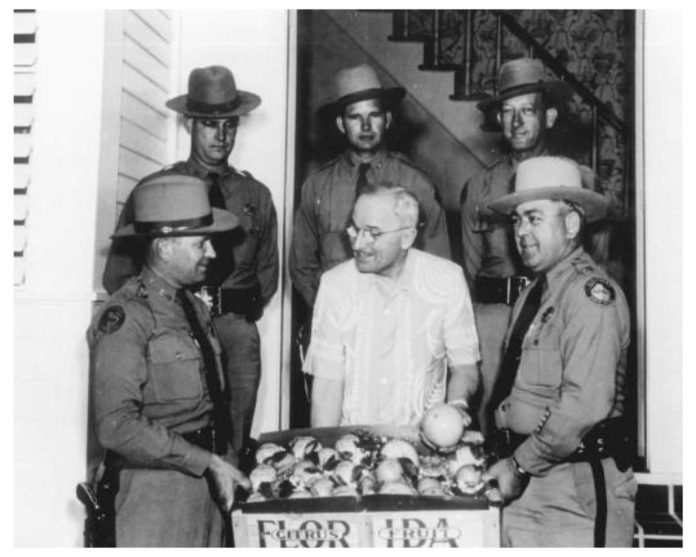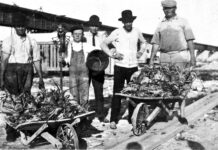
We all know the “Key” in “Key lime pie” comes from the Florida Keys, but why is a lime native to Southeast Asia named after an island chain in Florida? And how is the price of a house in the Florida Keys tied to a singular citrus? Let’s dive into The Key Lime Pie Hole and find out.
“Key lime” is a term applied to Citrus aurantifolia. Spanish explorers may have introduced this lime to Florida as early as 1565, but botanist Henry Perrine is credited with bringing it to the Keys a few years before his 1840 murder on Indian Key (more on that later). Mother Nature helped history along from there.
The first known use of the term “Key lime” appeared on Dec. 28, 1905, in a Country Gentleman article by John Gifford of Dade County. In it he wrote, “Now on these Keys the lime grows almost wild. It is free from scale, probably because of the salt atmosphere. It will grow and fruit right in the woods. No fertilizer is needed. They yield enormously without it. The key lime is the finest on the market. It is aromatic, juicy and highly superior to the lemon.”
Local farmers harvested and shipped the limes for the next several decades. They were a prized garnish for the Gin Rickey and similar drinks, and the number of commercial groves in the Keys continued to increase once Flagler’s railroad arrived. Limes needed a warm climate to thrive, so most of the limes produced in Florida came from the Keys. Citrus aurantifolia was the only variety thriving on the islands, so locals simply called them “limes.” Old conch recipe cards for our favorite pie just called it “lime pie.” A 1926 menu published in the Key West Citizen did the same. It wasn’t until Aug. 9, 1939, that locals put the “Key” in Key lime pie as part of a calculated marketing effort, introduced by popular local druggist John Gardiner, to revive the Keys economy.
By 1939, the lime industry in the Florida Keys was facing competition on two fronts. On the first, the hybrid Persian lime — created by breeding a Key lime with a lemon — was thriving in parts of Florida where traditional limes did not do well. On the second, Mexican limes — identical to those grown in the Keys — were being imported at lower prices with little import duty. As the price of Key limes dropped from $8 per crate to $1 per crate, it became clear that lime competition was hurting local bank accounts.
A front-page headline in the Aug. 19, 1939, edition of The Key West Citizen encouraged the community to “Adopt Slogan To Advertise Limes Grown Along Keys.” The article credits Gardiner and introduces a “concentrated effort to attract wider distribution to limes grown on the Florida Keys … started with the introduction last week of the special souvenir crate of Key West Limes for the tourist trade. The crates are sold to tourists for twenty-five cents each, limes and all, and they may be mailed to northern friends for approximately ten cents.” The article goes on to call on housewives of Monroe County for recipes employing key limes for favorite drinks, salad combinations, desserts, and the “famous lime pie” with a promise that the best recipes will be printed in “an attractive folder to be inserted in each souvenir crate. Thus — the outside world will become more easily familiar with the high and desirable qualities of key limes.”
An article published the same month praises the souvenir lime package saying, “It is probable that the limes will find a ready market. It will expand a small industry. It will bring prosperity to our frost-free lime areas along the keys and in Key West. This will increase the demand for property in Monroe County. And that means prosperity for many of our citizens.”
A sweet plan, indeed — use Key limes to target people looking for a piece of the pie. Reading through the local real estate ads this week, I’d say the plan worked. Perhaps a little too well!
Join me next time and we’ll take a look at the sour side of Key limes, with a little local love for a culinary delight known as “old sour.”
Love & Limes!


























